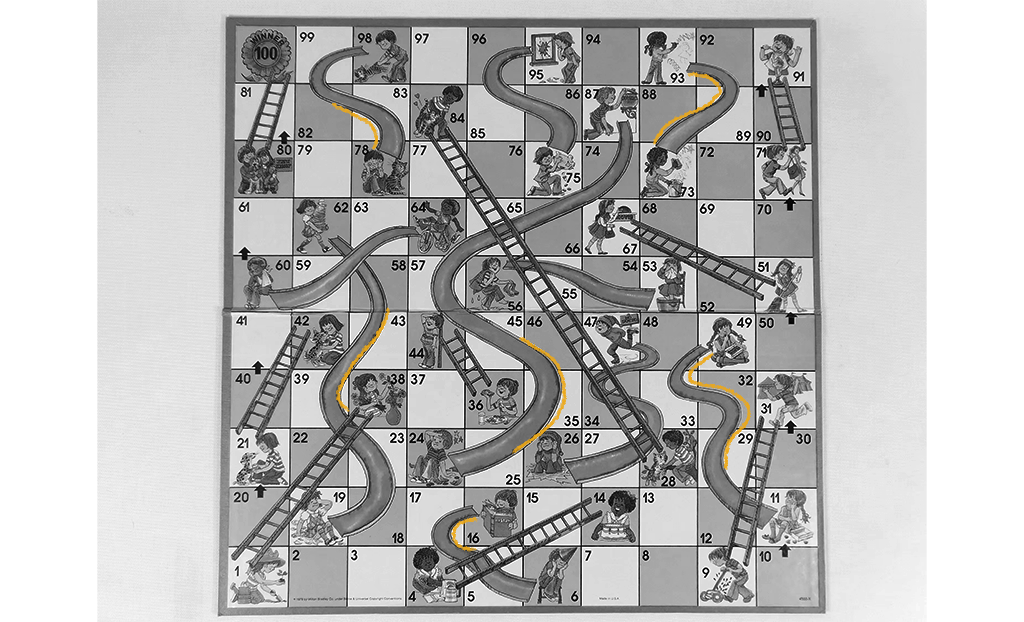Chutes and Ladders is based on an ancient game called Snakes and Ladders, which is believed to date back to India in the 2nd century BC. This historic version was an allegory of the journey of life and used to demonstrate concepts like karma, represented by the ladders, and kama (desire), represented by the snakes. In the original version, there were more snakes than ladders, making it harder to ascend to Moksha, or spiritual liberation, within the game. The British later adapted the game and applied their Victorian views to it; the ladders represented virtues or good deeds and the snakes represented vices or bad deeds. In the British version, the number of snakes and ladders was made equal. The game was redesigned again when Milton Bradley published it in the United States in 1943. They removed the snakes and decided to use a playground theme of chutes and ladders instead. They also renamed the game accordingly. However, some of the original morality lessons still remain in this newer version; at the bottom of each ladder, a child performing a good deed is depicted, while at the top of each chute, a child doing something mischievous is shown. Since Chutes and Ladders was introduced in 1943, at least a dozen other game publishers have released their own versions of the game. There’s even a Canadian version that uses toboggan runs rather than chutes or snakes, and Snakes and Ladders remains popular in Britain today, especially the Spear’s Games edition.

Your go-to guide for weird history facts
Subscribe to the FREE daily email that makes learning about history fun.


